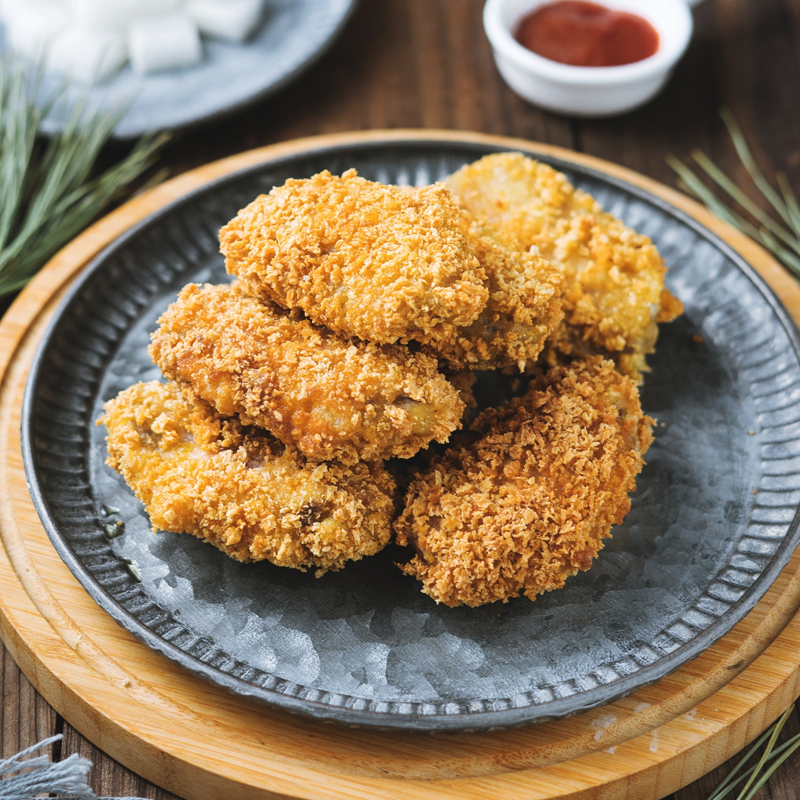
It also shaves off all those crusty nubs and crags that American cooks strive for.Īfter 10 more minutes in the fryer, the chicken is smooth, compact, golden-brown, and done. This slows the cooking process, preventing the crust from getting too brown before the meat cooks through. The oil temperature is a relatively low 350 degrees, and the chicken is cooked in two separate stages.Īfter 10 minutes, the chicken is removed from the oil, shaken vigorously in a wire strainer and allowed to cool for two minutes. (Chinese cooks call this “paper fried chicken.”) The chicken is unseasoned, barely dredged in very fine flour and then dipped into a thin batter before going into the fryer. Korean-style fried chicken is radically different, reflecting an Asian frying technique that renders out the fat in the skin, transforming it into a thin, crackly and almost transparent crust.

#Korean fried chicken origin skin
But too often, the flesh is still raw when the crust is cooked, or the skin never cooks all the way through, leaving a flabby layer of skin between the meat and the crust. When that crust is nubbly and evenly browned, and the chicken meat is cooked through, the chicken is sublime. Hiroko Masuike for The New York Timesįor crunch, American-style fried chicken relies on a thick, well-seasoned crust, often made even thicker by soaking the chicken pieces beforehand in buttermilk. (Warning: partisans of Southern-fried chicken will find much that is blasphemous in the following.)Īt Unidentified Flying Chickens in Jackson Heights. Although none of the chicken fryers interviewed would describe the method in its entirety, its outline is clear. Bon Chon, Bon Bon and Unidentified Flying Chickens all base their technique on the one developed by Kyochon, one of the most popular Korean chains. Jhun spent a month training with the founder of Bon Chon to master the chain’s frying method, which produces characteristically light and crunchy pieces. Chung’s brother-in-law and business partner. “People - even Americans - say the combination is really addictive,” said Ryan Jhun, Mr. The typical accompaniment to Korean fried chicken is cubes of pickled radish and plenty of beer or soju the combination produces an irresistible repetition of salt and spice, cold and hot, briny and sweet, crunchy and tender. The chicken is typically seasoned only after it is fried, with either a sweetish garlic-soy glaze or a hotter red-pepper sauce that brings the dish into Buffalo wing territory.īut do not look for blue cheese and celery sticks, or even biscuits and gravy.

Jin and others, that’s why the Korean-style chicken places here serve mostly wings (true connoisseurs can specify either the upper “arm” or the “wing”) and small drumsticks. But the large breasts and thighs of American chickens are a challenge to cook evenly.Īccording to Mr. In Korea, chickens are much smaller, so the whole chicken is fried and served, hacked up into bite-size pieces. “We use fresh, not frozen, chicken, always fried to order, no trans fats, no heat lamps.” “I really think we make it better than the original,” said Young Jin, who opened a friendly little chicken joint called Unidentified Flying Chickens in Jackson Heights last month.

Jhun spent a month learning the two-step frying technique the Korean chain uses.


 0 kommentar(er)
0 kommentar(er)
